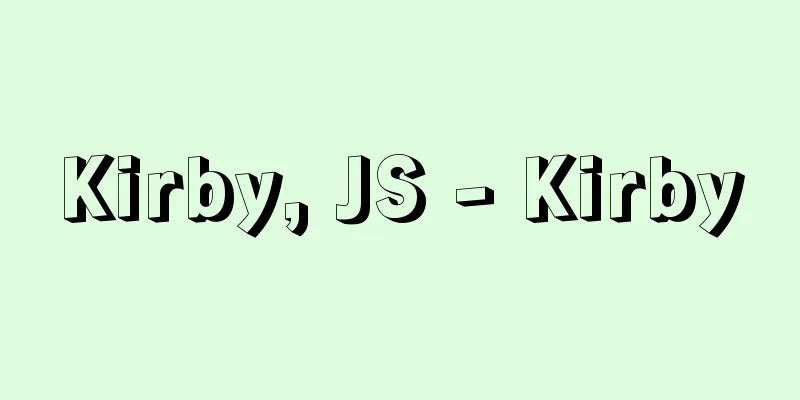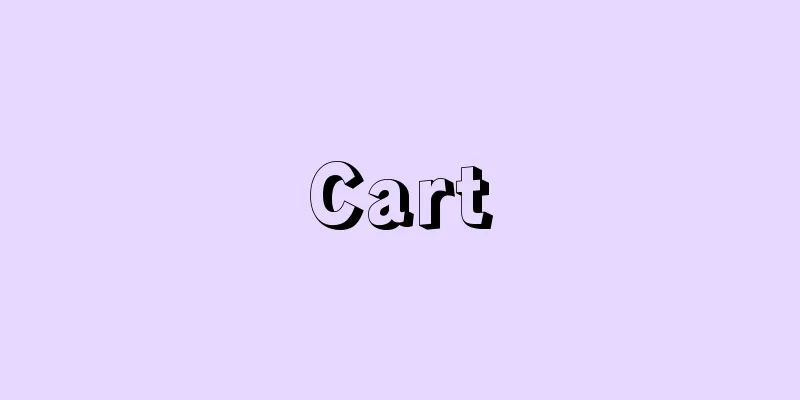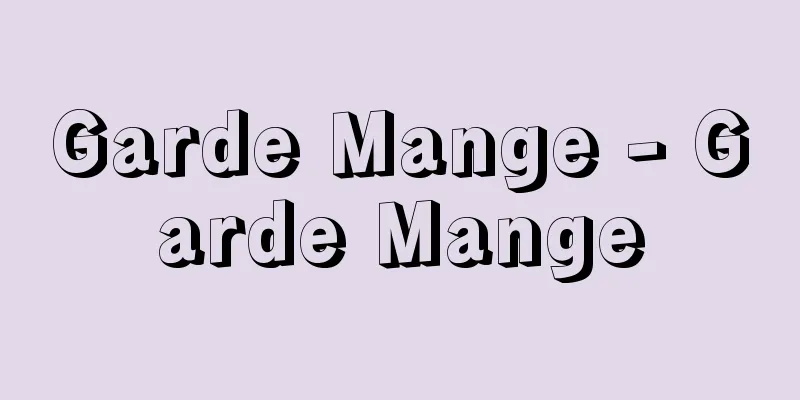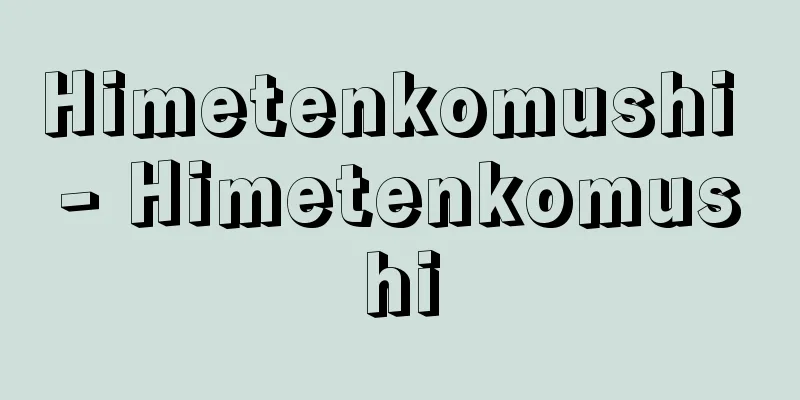Harmonica - Harmonica (English spelling)

|
A type of aerophone instrument. It is also called a mouth organ or mouth harp. The basic form is a row of free reeds, each with a hole for inhalation and exhalation, housed in a box-shaped case. Usually, reeds that vibrate with inhalation and exhalation are arranged alternately so that two adjacent notes do not sound at the same time. The instrument is played by bringing it between the lips and moving it from side to side to get the desired note, and covering the unnecessary holes with the tongue. The timbre and pitch can be changed by changing the shape of the mouth and the position of the tongue. Covering the instrument with the hand produces a muffled sound, and rapid changes in this manner can produce a fine fluctuation in the sound. Harmonicas can be broadly divided into monophonic and chromatic. Monophonic harmonicas are constructed so that two reeds are used for one note, and these two reeds are not exactly the same pitch, but are slightly offset from each other. This produces a beat, resulting in a unique tone. The tremolo harmonicas commonly used in Japan are of this type. Monophonic harmonicas use one reed for one note, and do not produce a beat. Monophonic harmonicas are mainstream in Europe and the United States, as they are easier to produce a pure sound in ensemble performances. The arrangement of notes can be easily changed by changing the location of the reeds for each pitch, so there are many different types. Generally, diatonic harmonicas are the basis, and if it is a major key instrument, the notes that are produced when blowing are C, E, and G, and the other notes are produced when sucking, making it easy to produce tonic chords. Also, chromatic harmonicas are some kind of combination of two diatonic harmonicas that differ by a semitone (for example, C major and C sharp major), and there are ones that are arranged in two rows above each other, and ones that allow you to move to the key a semitone higher by pressing a lever (slide chromatic). The harmonica is said to have been introduced to Japan in the 1890s (mid-Meiji 20s). When imports of German products were halted due to World War I, production began in Japan around 1916-1917 (Taisho 5-6). As a cheap and easy-to-make instrument, it spread among the general public towards the beginning of the Showa period, and performances became very popular. Performers of the instrument include Kawaguchi Shogo and Miyata Toho. Although it no longer has the same glamor as it once did after World War II, there is still demand for it as an educational instrument, and Japanese harmonicas are proud of their world-class quality in terms of production. [Ryūji Uta] Circa 1895 Wood and metal Length 12.1cm Collection of the Metropolitan Museum of Art, Germany 19th century harmonica Source: Shogakukan Encyclopedia Nipponica About Encyclopedia Nipponica Information | Legend |
|
気鳴楽器の一種。マウス・オルガンmouth organ、マウス・ハープmouth harpなどともよばれる。基本的な形は、フリーリードを1列に並べ、個々に呼気・吸気を通す穴を設けて箱形のケースに収めたものである。普通、呼気で振動するリードと吸気で振動するリードを交互に並べ、隣接の2音が同時に鳴らないようにしている。これを唇の間にもってきて、左右に動かして必要な音を得、不必要な穴は舌でふさぐなどして演奏する。口腔(こうこう)の形や舌の位置を変えて音色を変化させたり音高を変化させることができる。また、楽器を手で覆うとくぐもった音になり、この変化を急速につけると音を細かく揺らすこともできる。 ハーモニカは複音型と単音型に大別することができる。複音型は一つの音に対して2枚のリードが用いられるような構造になっているもので、この2枚のリードは完全に同一の音高ではなく、微妙にずらせてある。そのためにうなりが生じ、独特の音色が得られる。日本でよく用いられるトレモロ・ハーモニカはこのタイプである。単音型は一つの音に対してリード1枚で、うなりは生じない。合奏においても純粋な響きを得やすいことから、欧米では単音型が主流となっている。 音の配列は、各音高のリードを取り付ける場所をかえることで簡単に変更できるので、さまざまな種類がある。一般的には全音階を基本とし、長調の楽器であれば吹くと鳴る音がド、ミ、ソ、吸うと鳴る音がそれ以外となっていて、主和音を簡単に出せるようになっている。また、半音階ハーモニカは半音異なる二つの全音階ハーモニカをなんらかの形で組み合わせたもので(たとえばハ長調と嬰(えい)ハ長調)、上下2列に並べたものや、レバーを押すことで半音上の調に移行できるようにしたもの(スライド式クロマティック)などがある。 ハーモニカが日本に伝えられたのは1890年代(明治20年代中ごろ)といわれる。第一次世界大戦でドイツ製品の輸入が止まった1916~1917年(大正5~6)ごろ日本でも製造が始められ、安価で手軽に音の出せる楽器として、昭和の初めにかけ一般大衆の間に広まり、演奏活動も盛んに行われた。演奏家としては川口章五(しょうご)、宮田東峰(とうほう)らの名があげられる。第二次世界大戦後はかつての華々しさはないが、教育楽器としての需要もあり、製造面では日本のハーモニカは世界的な品質を誇っている。 [卜田隆嗣] 1895年ころ 木・金属 長さ12.1cm ドイツメトロポリタン美術館所蔵"> 19世紀のハーモニカ 出典 小学館 日本大百科全書(ニッポニカ)日本大百科全書(ニッポニカ)について 情報 | 凡例 |
Recommend
Obi Bandicoot - Obi Bandicoot
...General term for a rabbit-sized or slightly sm...
Hepatocellular carcinoma
…Generally, it means a carcinoma that originates ...
Self-propelled gun
A gun mounted on a vehicle so that it can move in...
Wetland Agriculture
Agriculture carried out in hot, humid regions wher...
Petrashevsky case
A political event in 19th century Russia. Famous f...
Enbunhanzeirei - Enbunhanzeirei
…In September 1657 (Shohei 12, Enbun 2), a de fac...
Voice response system
A system that identifies the content of questions ...
Mitin, Mark Borisovich
Born: July 5, 1901, Shitomir [Died] January 1987. ...
Cirrata
...In addition to this, experiments have been con...
Hantaro Nagaoka
Physicist. The only son of Nagaoka Jisaburo (1839...
Azotobacterin - Azotobacterin
...(1) Those that use Azotobacter. This microorga...
Iwakura [city] - Iwakura
A city in the northwest of Aichi Prefecture. It wa...
closed corporation
…France followed Germany's lead and enacted t...
Emperor's silk
...In the early Edo period, the Shogun gave prior...
Agora - Agora (Greek)
In ancient Greek society, the square was the cent...









